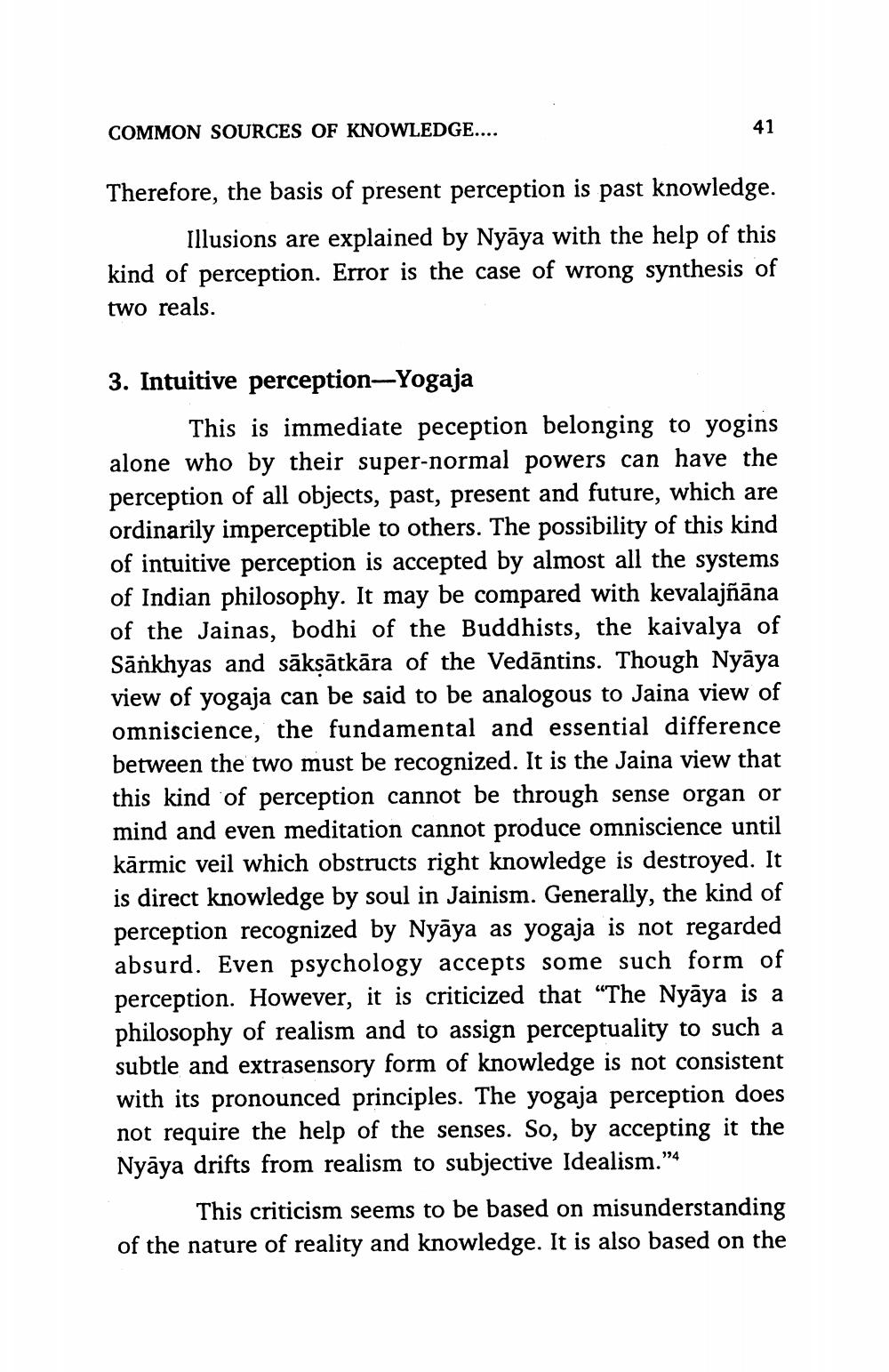________________
COMMON SOURCES OF KNOWLEDGE....
41
Therefore, the basis of present perception is past knowledge.
Illusions are explained by Nyaya with the help of this kind of perception. Error is the case of wrong synthesis of two reals.
3. Intuitive perception-Yogaja
This is immediate peception belonging to yogins alone who by their super-normal powers can have the perception of all objects, past, present and future, which are ordinarily imperceptible to others. The possibility of this kind of intuitive perception is accepted by almost all the systems of Indian philosophy. It may be compared with kevalajñāna of the Jainas, bodhi of the Buddhists, the kaivalya of Sankhyas and sākṣātkāra of the Vedāntins. Though Nyāya view of yogaja can be said to be analogous to Jaina view of omniscience, the fundamental and essential difference between the two must be recognized. It is the Jaina view that this kind of perception cannot be through sense organ or mind and even meditation cannot produce omniscience until karmic veil which obstructs right knowledge is destroyed. It is direct knowledge by soul in Jainism. Generally, the kind of perception recognized by Nyāya as yogaja is not regarded absurd. Even psychology accepts some such form of perception. However, it is criticized that "The Nyāya is a philosophy of realism and to assign perceptuality to such a subtle and extrasensory form of knowledge is not consistent with its pronounced principles. The yogaja perception does not require the help of the senses. So, by accepting it the Nyaya drifts from realism to subjective Idealism."4
This criticism seems to be based on misunderstanding of the nature of reality and knowledge. It is also based on the




